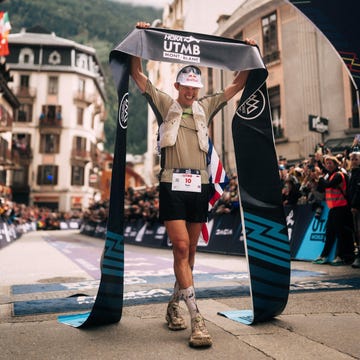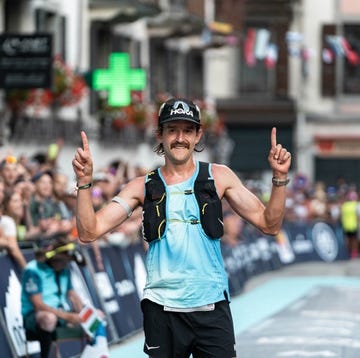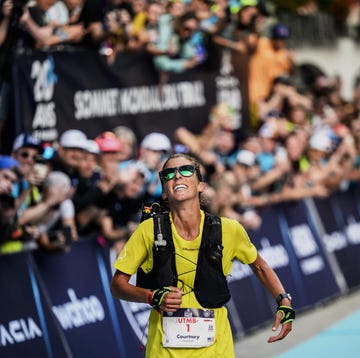Love them or loathe them, carbon plate running shoes are here to stay – and with so many options from so many brands currently on the market, it’s difficult to cancel out the noise of the super shoe hype. Although they aren’t suited to every runner’s goals and preferences, super shoes are, for many runners who aspire to achieve some bonus speed on race day, a worthy – if not necessary – investment.
We know that super shoes are fast and that they are, now, the only type of trainer to appear on major race podiums. Specifically, they are more economical than traditional, carbon plate-free running shoes, in that you can run in them at the same effort, with the same physiological capacities, while hitting faster speeds. What’s not to like about that?
In fact, a pivotal study conducted in 2017 found that super shoes – a novel concept at the time – were consistently better than traditional running flats by about 4%, for everyone. This is a pleasing outcome for super shoe supporters – and possibly a reason why very little research has been carried out on the positives (and negatives) of super shoes ever since. Are the benefits of super shoes consistent? For how long can you wear them in a race before the improvements to running economy fizzle out? Can they really help to quicken your pace over the course of an entire race like a marathon?
What everyone's reading
Thankfully, a new study has given us some answers.
What did the super shoe study involve?
The aim of the study was to determine how running economy and biomechanics changed during 90 minutes of continuous running, wearing super shoes in one instance and daily trainers in another.
To do so, researchers picked out nine fit, fast and highly-trained runners – four men and five women, with an average age of 32 – and asked them to complete two lab tests, 14 days apart. Although both tests involved running continuously on a treadmill at submaximal threshold effort for 90 minutes, one saw them run in a pair of super shoes, while the other saw them run in a pair of traditional racing flats. To add more context, each participant had a World Athletics score of around 930 points, which equates to a 10K time of 30:17 for men and 36:09 for women. Swift.
For every test and condition, the researchers measured each participant’s running economy and recorded biomechanical metrics like cadence, ground contact time and flight time.
What were the results of the study?
The lab tests found that running economy decreased in both shoes by about 5.63% over the course of 90 minutes, although the rate of deterioration was reasonably constant. In other words, the performance of neither shoe completely dropped off a cliff.
However, researchers found that running economy was 3.18% better in the super shoes across the whole 90-minute test period, proving that they still have the edge over daily trainers, even when fatigue starts to set in nearer the end of a hard run or race. With respect to biomechanics, the super shoes also performed better early on in the tests, with participants showing longer flight times and shorter ground contact times. That said, the differences between the two shoes in terms of their impact on biomechanics disappeared over time, which shows that fatigue is enough to override any benefits to form that a running shoe can offer.
Even though the results of this study indicate that carbon plate shoes do lose some of their benefits over 90 minutes of running, even for fast athletes, the same goes for traditional racing flats – and super shoes continue to be the best option in terms of running economy. Still, no world-class runner has (or will) ever complete a marathon in 90 minutes, so more testing is perhaps needed to unveil the true power of super shoes over the full 26.2-mile distance.













